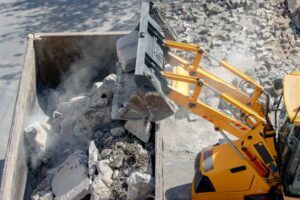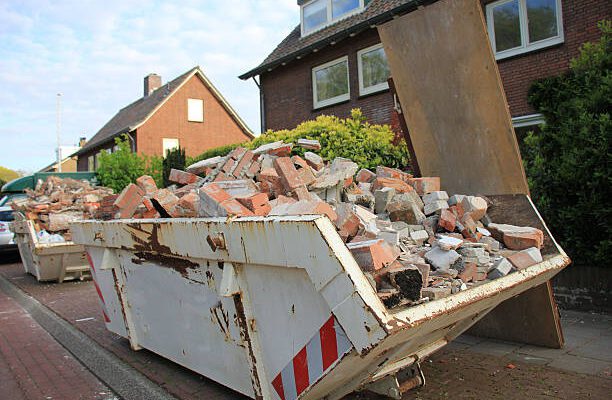Reducing waste on construction sites by implementing effective waste material management techniques would benefit the environment. While saving the project owner money and time. Being environmentally conscious, accountable, and sustainable also helps a company’s reputation in the construction sector. Which helps it win more business since most clients today, expect environmentally friendly construction practices.
A strong framework is established by creating or implementing an active waste management module. Which helps to significantly reduce waste on building sites as well as cost overruns brought on by excess orders.
Here are some suggestions for lowering the amount of construction trash on job sites and implementing sustainable methods to lessen the impact on the environment:
-
Waste reduction during the planning and implementation stages
 (Photo from iStock)
(Photo from iStock)
Reduce source reduction, or planning to remove waste even before it is generated. By including waste material minimization techniques into the project’s initial planning stage. More money is saved on the cost of materials. And less waste is produced during the course of a building project when the resources needed are estimated more precisely.
Effective waste management techniques should be used during the planning stage, including pinpointing the area. Where waste generation is anticipated to be at its highest, pinpointing locations where recycling bin installation will be most effective. Identifying situations where recyclable materials can replace non-recyclable ones, determining the overall quantity of material that will be used, and training contractors and staff on the proper waste material segregating and disposal methods.
-
Vendors and Selling Techniques
The vendors should be chosen based on their commitment to environmental preservation, support for construction waste management procedures, and ability to supply recyclable or recycled materials in order to improve sustainability through the use of materials and waste management techniques.
Environmentally conscious partners who can aid in the prompt waste material treatment of the building site trash during and after the project must also be identified, in addition to ethical vendors. Contractor and supplier should encourage the use of products with little to no packaging, especially cardboard and plastic, as these materials must eventually be disposed of.
-
Avoid Demolition and Instead, Use Deconstruction
 (Photo from iStock)
(Photo from iStock)
Instead of dismantling buildings, deconstruction is a novel reuse strategy that has been implemented to maximize material recovery for recycling or reuse while minimizing waste. One of the realistic strategies that can be used to minimize waste and lessen the ecological impact is the deconstruction of leftover materials and construction trash.
Deconstructing is carefully picking apart a building piece by piece in order to save usable components and reduce waste. It is possible to repurpose the salvaged materials or turn them into valuable components that can be sold for use in later construction projects. In some circumstances. The previous structure might be integrated into the new one without being completely dismantled, which can assist reduce trash production.
Normal demolition differs from deconstruction because during demolition, time is of the essence and the structural components are finally disposed of rather than salvaged, as is the case during deconstruction.
Deconstruction, as opposed to demolition, benefits the environment, improves public health and safety, and allows for a genuine profit margin to be made off the components and materials that are purchased. When working on a construction project, designers should concentrate on building a structure in a way that it can be easily disassembled in the future to extract as much salvageable material as feasible.
-
Correct Material Identification
Identifying materials according to their usage and disposal techniques is one of the most crucial processes in waste management on a building site. Materials can be distinguished depending on whether they are recyclable. Or reusable and the recycling techniques that can be applied to them. When purchasing supplies, attention can be paid to eco-friendly products that have a high degree of recyclability and potential for reuse. Which will reduce the amount of waste produced on the job site.
Concrete, wood, metal, plastic, glass, drywall, asphalt components, etc. are a few elements that are likely to be recycled or utilized again. Concrete is a waste that is produced on building sites in large quantities—far more than metal, wood, asphalt, gypsum, and drywall put together.
-
Placement of Waste Containers Correctly
 (Photo from iStock)
(Photo from iStock)
Dustbins and other containers for disposing of rubbish should be put in strategic locations. To make it easy for staff to do so without any problems. To provide everyone on site with the opportunity to dispose of waste. Containers for all sorts of waste being generated. Including wood, metal, concrete, etc., must be placed in various areas throughout the building site.
Contractors and staff must be informed of and encouraged to use these containers. After the proper number of receptacles have been put in key places. To avoid waste in these containers, routine disposal services should be planned.
-
Utilize scraps
When leftover pieces of the prior materials are still available. And can be put to use in specific tasks. New material supplies are frequently utilized. The best strategy to control waste on a construction site is to reuse leftover material and salvage leftovers that are produced.
It is necessary to be aware of the policies of the suppliers. In order to understand how surplus materials must be returned to them.
It is possible to give instructions to subcontractors to gather and store scraps at the cutting and fabricating units. Gaining information about resources that can be recycled in addition to not using new materials.
-
Percentage of Recovered or Reclaimed Materials
It is advisable to set a minimum proportion when purchasing materials for the use of recycled. Recovered, or recyclable materials that can lessen their negative effects on the environment and lower their cost. Even the Environmental Protection Agency (EPA). Has established a minimum quantity of recycled or salvaged materials that must be purchased for a few particular categories.
-
Management of Hazardous Construction Waste
Given how challenging it is to properly dispose of hazardous waste generated on construction sites. Building businesses place a high priority on doing so. Hazardous waste can significantly harm the ecology if it is not properly disposed of.
Reference:
Powerplay
A COMPLETE GUIDE FOR YOUR WARDROBE:
How to Style Your Wardrobe




